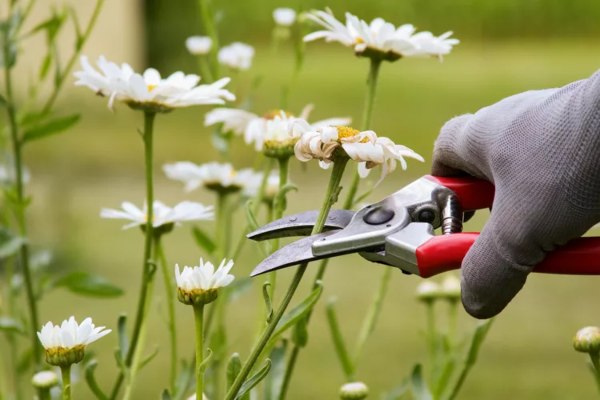Pruning is a vital aspect of plant care, even though it may initially seem counterproductive to remove healthy-looking leaves and branches. The benefits of pruning, such as improved plant health and increased growth, far outweigh the temporary loss of foliage.
However, the timing and intensity of pruning depend on the specific plant species and the prevailing climate conditions in your region. This guide will provide valuable information on how to prune effectively, ensuring your plants’ optimal health and beauty.
When to Prune Plants?
Can we prune plants and trees by ourselves? While it can be tricky to determine the ideal timing for pruning, don’t worry too much if you get it wrong. Pruning at the wrong time might lead to fewer blooms or produce, but it’s unlikely to cause long-term damage to the plant. However, it’s best to avoid pruning too late in the growing season. This can stimulate tender new growth that may be susceptible to frost damage during the winter.
The ideal time to prune spring-flowering trees and shrubs is shortly after their blooms fade in the late spring. It’s important to prune them before new buds begin to form.
To encourage a bountiful harvest, prune fruiting plants during the late winter or early spring. Most fruit trees and berry plants should be pruned while they are dormant. Neglecting to do so can lead to a decline in plant health as it produces unproductive suckers that divert energy from the fruiting branches.
Most perennial plants need to be completely cut back either before or after the growing season. They also require regular pruning and removal of dead flowers throughout the year.
Also, Read Common Mistakes Growing Papyrus Plants and How to Fix Them
What Do We Need for Pruning?
Tools/Equipment
- Gardening Gloves
- Hand pruners
- Protective clothing
- Loppers
- Handsaw
- Shears
Instructions
Ways to Prune Fruit Trees
Pruning is crucial for fruit-bearing trees. Heading cuts, which involve shortening branches, focus the tree’s energy on producing more fruit in the next season. Thinning cuts, which involve removing entire branches, help to eliminate unwanted suckers and dead or diseased limbs.
-
Check Your Trees
In the late winter or early spring, conduct a thorough inspection of your fruit tree to determine the areas that need pruning. Pay close attention to branches that have grown excessively long, exceeding two feet in length. These branches are less likely to bear fruit in the future and may benefit from pruning.
2. Know Which Branches to Get Rid Of
When deciding which branches to prune, consider factors such as the health of the branch, its contribution to the overall shape of the tree, its growth pattern, and your personal aesthetic preferences. It can be helpful to use pieces of string to mark branches for pruning as you examine the entire tree. This allows you to visualize the desired shape and make informed decisions about which branches to remove.
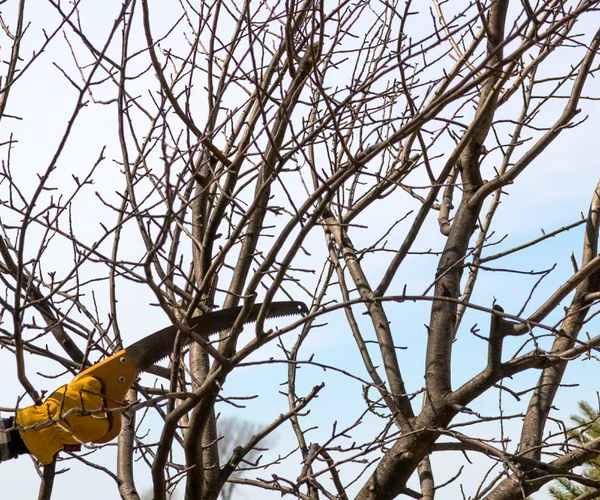
3. Remove Unwanted Branches
Use loppers or a handsaw to remove dead or diseased branches, as these can become sources of infection and divert energy from healthy growth. Additionally, eliminate any unnecessary new branches that might be competing for resources and take away energy from the fruit-bearing branches. Branches that are growing downward should be prioritized for removal, as they are less likely to produce fruit and can interfere with the tree’s overall structure.
4. Make Heading Cuts
To shape the tree and encourage the growth of lateral branches, use your loppers to make heading cuts on the older, established growth around the tree. Heading cuts involve shortening branches by approximately one-third to one-half of their length. This pruning technique stimulates the growth of new branches from the cut point, increasing the density and overall fullness of the tree.
How to Prune Berry Bushes?
Raspberry and blackberry bushes, in particular, can benefit significantly from pruning to remove weak and broken canes. This allows more sunlight to penetrate the bush, promoting healthier growth and increased fruit production. When pruning these plants, it is essential to wear protective clothing, including gloves and long sleeves, to avoid painful injuries from the thorns.
-
Remove Unwanted Canes
During the dormant season, typically from October through March, carefully inspect your raspberry or blackberry bushes for weak, dead, or diseased canes. Use pruning shears to remove any canes that exhibit signs of damage or disease. This will help to promote the health of the bush and ensure a bountiful harvest in the upcoming growing season.
2. Thin the Canes
After removing weak, dead, and diseased canes, thin out the remaining canes to a manageable number. Aim for 10 to 12 canes per bush. This will help to improve air circulation and sunlight penetration within the bush, leading to healthier growth and increased fruit production. To thin the canes, cut unruly or crossing canes at their base, ensuring that the remaining canes are evenly spaced and have ample room to grow.
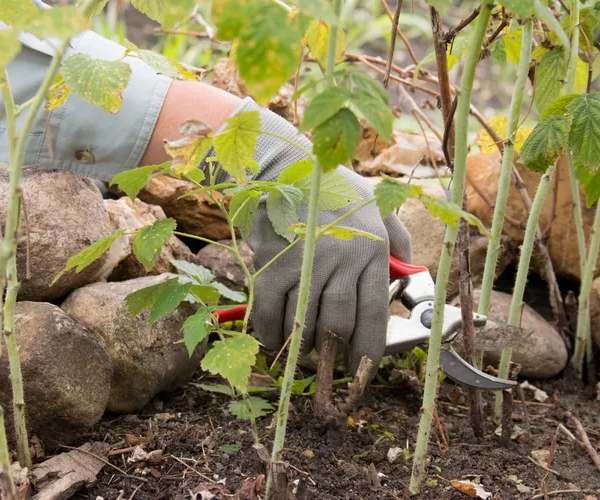
3. Trim the Height
To maintain a manageable size and shape for your raspberry or blackberry bush, trim the height of the entire bush to no more than five feet tall. This will help to prevent the bush from becoming overly dense and difficult to manage. By reducing the overall height, you can also improve air circulation and sunlight penetration within the bush, promoting healthier growth and increased fruit production.
Ways to Prune Flowering Trees, Shrubs, and Vines
While you can technically prune flowering plants at any time, it’s generally recommended to prune them shortly after they finish blooming. This will encourage the plant to produce more flowers in the following season. By pruning after flowering, you remove the spent blooms and redirect the plant’s energy towards producing new growth and flowers.
1. Know When the Plant will Bloom
During the first growing season of your flowering plant, carefully observe when it begins to bloom. This information will be invaluable for planning your pruning schedule in future years. By knowing the plant’s blooming period, you can time your pruning to coincide with the end of flowering, ensuring optimal results and maximizing the plant’s flowering potential.
2. Get Rid of Unwanted Branches
Once the blooms of your flowering plant have faded, carefully inspect the plant for any branches that appear dead, weak, or diseased. Use your pruning shears or loppers to remove these branches. Dead or diseased branches can become a source of infection and divert energy away from healthy growth, so it’s important to eliminate them promptly.
3. Remove the Suckers
Suckers are non-flowering shoots that grow from the base of the plant. They can compete with the main stems for resources, reducing the plant’s energy and potentially hindering its flowering ability. To promote healthy growth and maximize blooming potential, it’s recommended to remove any suckers that appear at the base of the plant. This will help to concentrate the plant’s energy on producing vibrant and abundant blooms.
4. Give the Plant a Proper Shape
To shape your flowering plant and encourage new growth, use your pruning shears to make heading cuts. Heading cuts involve shortening branches by approximately one-third to one-half of their length. When making a heading cut, be sure to cut just beyond a healthy bud, ensuring that the remaining portion of the branch has a viable growth point.
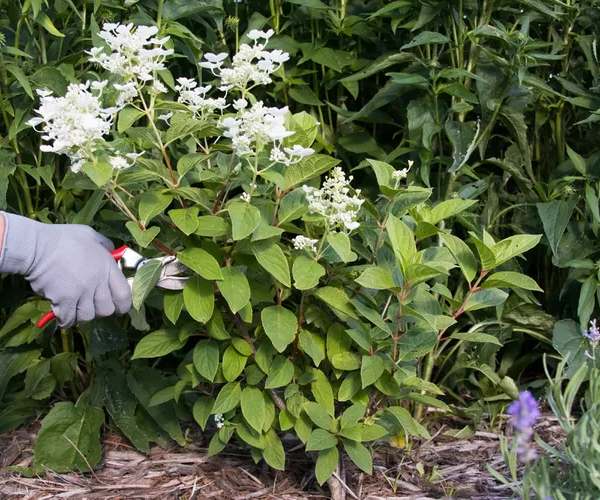
Angle the cut at 45 degrees to minimize the risk of water and disease entering the wound. This angled cut will also promote the growth of new shoots from the cut point, enhancing the plant’s overall shape and density.
Ways to Prune Perennials
Pruning non-woody perennials is generally a straightforward process. By regularly pruning and deadheading these plants throughout the growing season, you can maintain a beautifully manicured perennial bed.
Pruning involves removing dead, damaged, or overgrown parts of the plant while deadheading entails pinching off spent flowers. These practices help to promote healthy growth, encourage continuous blooming, and enhance the overall appearance of your perennial garden.
1. Cut the Dead Growth
During the fall or early spring, when your non-woody perennials have entered their dormant period, use your pruning shears to cut back all of the dead or brown growth to the ground.
This will help to remove any remaining dead material that could harbor pests or diseases, promoting healthy growth in the upcoming growing season. Additionally, cutting back the dead growth will create a cleaner and more aesthetically pleasing appearance for your perennial bed.
2. Train Your Plants
As your non-woody perennial plants grow throughout the growing season, you may need to train them to maintain a desired shape or size. This involves selectively removing parts of the plant that become unruly or interfere with the overall aesthetic appeal. You can accomplish this by cutting off unwanted growth or, in some cases, digging up portions of the plant.
Perennial plants that you dig up can be replanted elsewhere in your garden or shared with other gardeners. By training your perennials, you can ensure that they remain healthy and well-groomed, and contribute to a vibrant and visually appealing garden.
3. Pinch Flowers Right Below the Bloom
To keep your non-woody perennials looking their best throughout the growing season, regularly remove spent flowers by pinching or cutting them just below the bloom. This practice, known as deadheading, helps to promote continuous blooming, improve plant appearance, and prevent unwanted self-seeding.
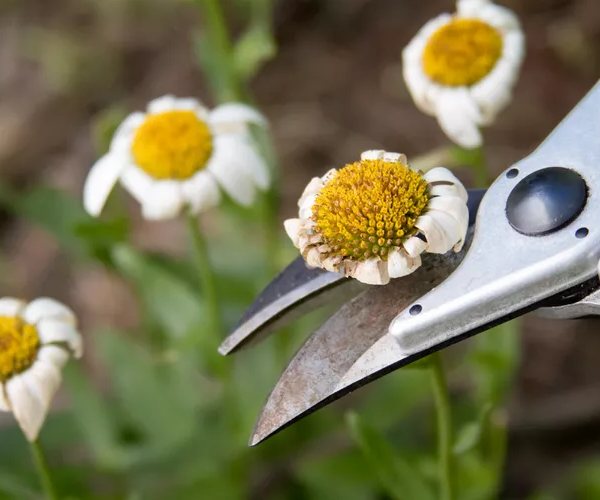
4. Trim Regularly
To maintain a balanced and well-shaped appearance for your non-woody perennials, regularly trim any vigorous, non-blooming growth throughout the growing season. This will help to prevent the plants from becoming overly leggy or unbalanced, ensuring a more visually appealing and healthy garden.
Tips for Pruning Plants
If you’ve neglected to prune your fruit-bearing bushes for an extended period, you may need to perform rejuvenation pruning to restore their health and productivity. This involves drastically cutting back the entire plant to a height of six to twelve inches, essentially starting over. Alternatively, you can gradually rejuvenate the bush by pruning it over several seasons.
Unlike other fruit trees, peach trees require special care when it comes to pruning. Pruning them during their dormant period can lead to dieback, a condition where branches or twigs die. Additionally, pruning peach trees in the winter can reduce their cold hardiness, making them more susceptible to damage during harsh winter conditions.
Hydrangea plants have become increasingly popular, leading to the development of various cultivars with different blooming characteristics. Some hydrangea varieties bloom on both old and new wood, rendering traditional pruning methods ineffective. It’s essential to research the specific recommendations for your hydrangea variety to ensure proper care and optimal flowering.
Pruning perennial plants is a skill that develops with gardening experience. The best practices can vary depending on your location, making it a unique and enjoyable aspect of gardening.
FAQs
Q: Can you prune too much?
Ans: Pruning too aggressively can harm your plant. Research the specific pruning techniques for your particular plant or tree, and when unsure, limit pruning to no more than one-third of the plant.
Q: Can you start a new plant from a pruned cutting?
Ans: Yes, many trees and plants can be propagated via cuttings. Typically, you either plant these cuttings in soil or root them in water first.
Also, Read 20 Pink Flowers That Will Add Timeless Elegance to Your Garden
